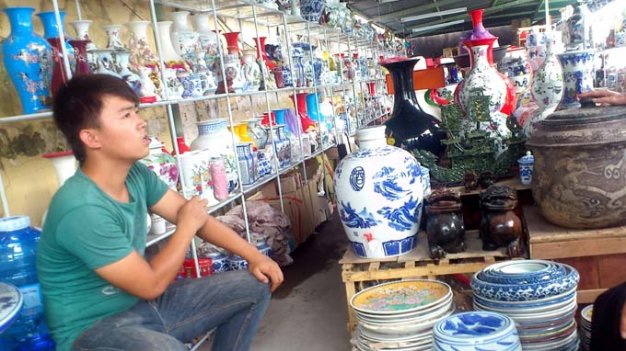Efforts to diversify import markets by the Vietnamese trade ministry and relevant associations have proven fruitless, at least in 2014, as the Southeast Asian country still gets most of its imports from China, according to the latest statistics.
The Ministry of Industry and Trade and many industry associations have repeatedly encouraged imports from other markets, especially after China stationed an illegal oil rig in Vietnamese waters in May. Beijing then withdrew the drilling platform from the waters following fierce protests from Hanoi and the international community.
But Vietnam’s imports from China in the Jan-Nov period still expanded 18.9 percent from the same period last year to US$39.9 billion, according to a report by the General Statistics Office of Vietnam.
The country’s 11-month trade deficit with China widened accordingly to $26.4 billion, up 22.1 percent compared to a year earlier.
ASEAN is the second-largest import market of Vietnam, with imports reaching $20.9 billion, a seven percent increase from the Jan-Nov period of last year.
It is followed by South Korea ($19.8 billion, up 4.2 percent) and Japan ($11.6 billion, up 9.7 percent).
ASEAN is a ten-member bloc that includes Indonesia, Malaysia, the Philippines, Singapore, Thailand, Brunei, Cambodia, Laos, Myanmar, and Vietnam.
Vietnam’s imports from the EU dropped 4.5 percent from the 11-month period last year to $8 billion, according to the General Statistics Office.
The Southeast Asian country has close economic ties with China, which results in huge imports from and exports to the market, Deputy Minister of Industry and Trade Do Thang Hai told reporters last month.
Hai said relevant ministries and industries have applied many measures to reduce the reliance on the Chinese market.
“Vietnam is also negotiating to join many free-trade agreements at the same time to achieve the target,” he said.
The deputy minister said narrowing the trade deficit with China requires a number of solutions, including boosting trade promotions and encouraging Vietnamese consumers to buy locally-made goods.
Vietnam’s exports in 11 months rose 13.7 percent year on year to $137 billion, while imports stood at $135 billion, according to the General Statistics Office.
The country posted a $2.06 billion trade surplus in the Jan-Nov period, strongly driven by the foreign-invested sector.
The foreign sector reported a $15.54 billion surplus, against the $13.48 billion deficit by the domestic sector.
Like us on Facebook or follow us on Twitter to get the latest news about Vietnam!






















































